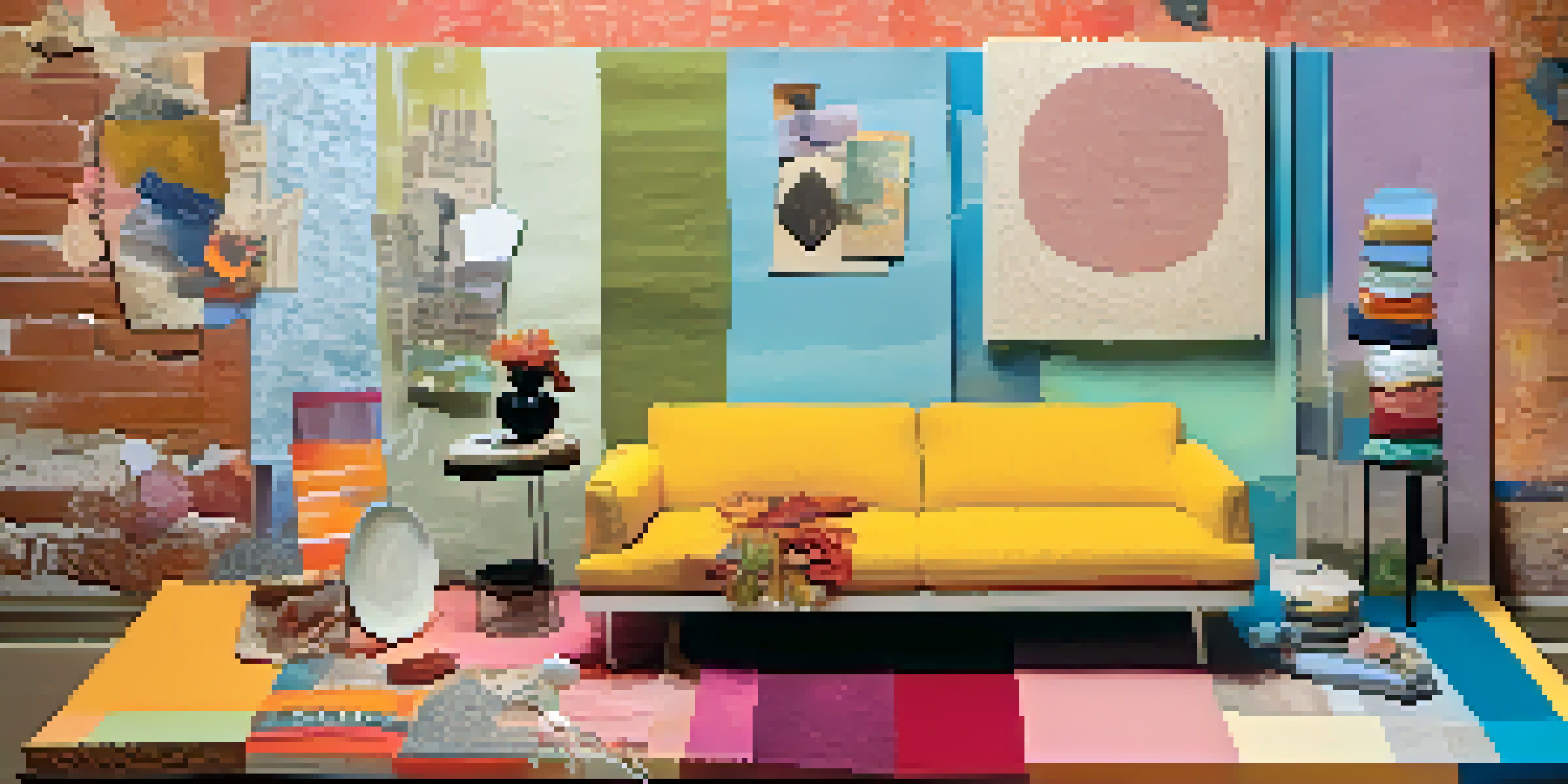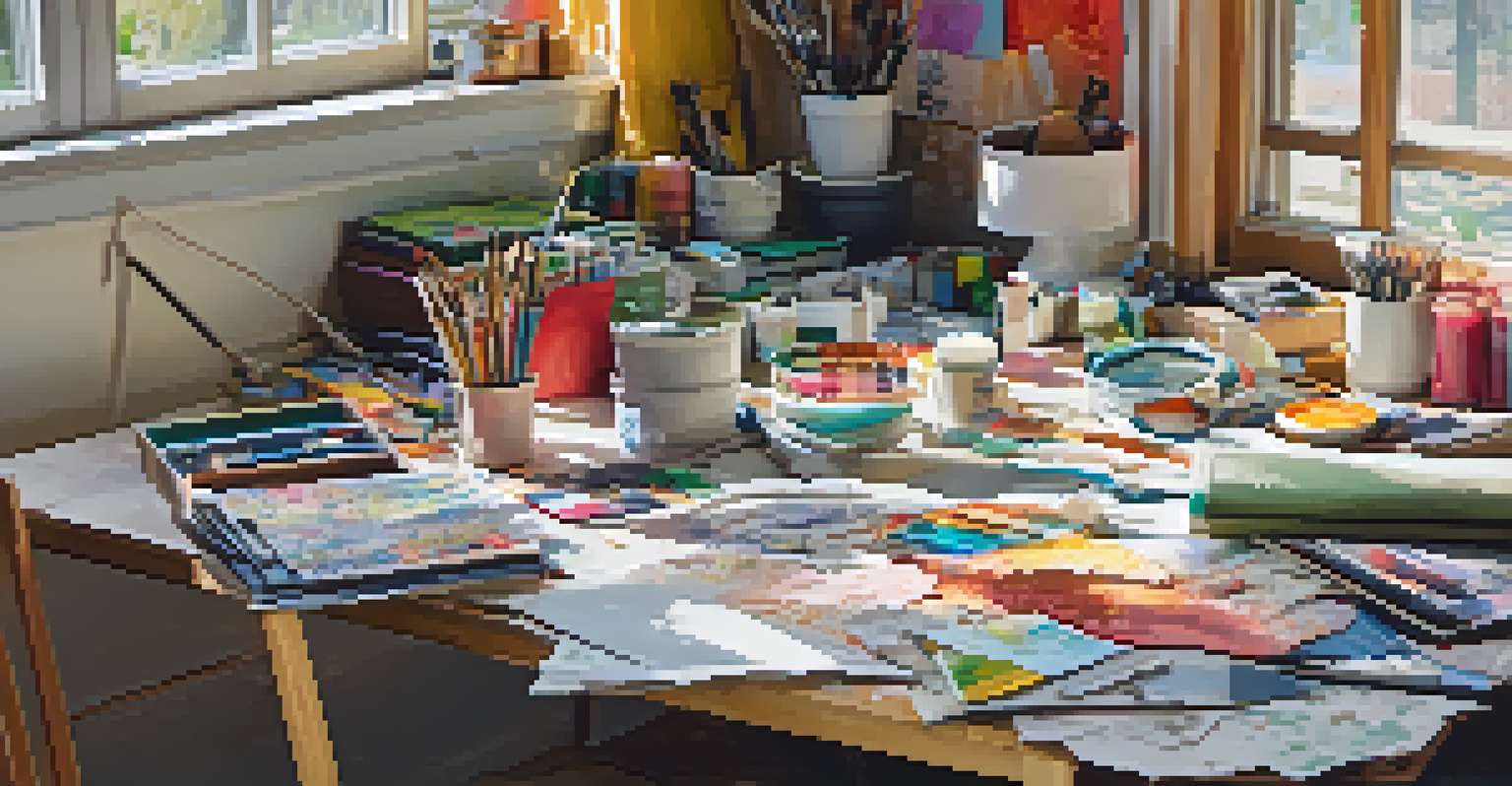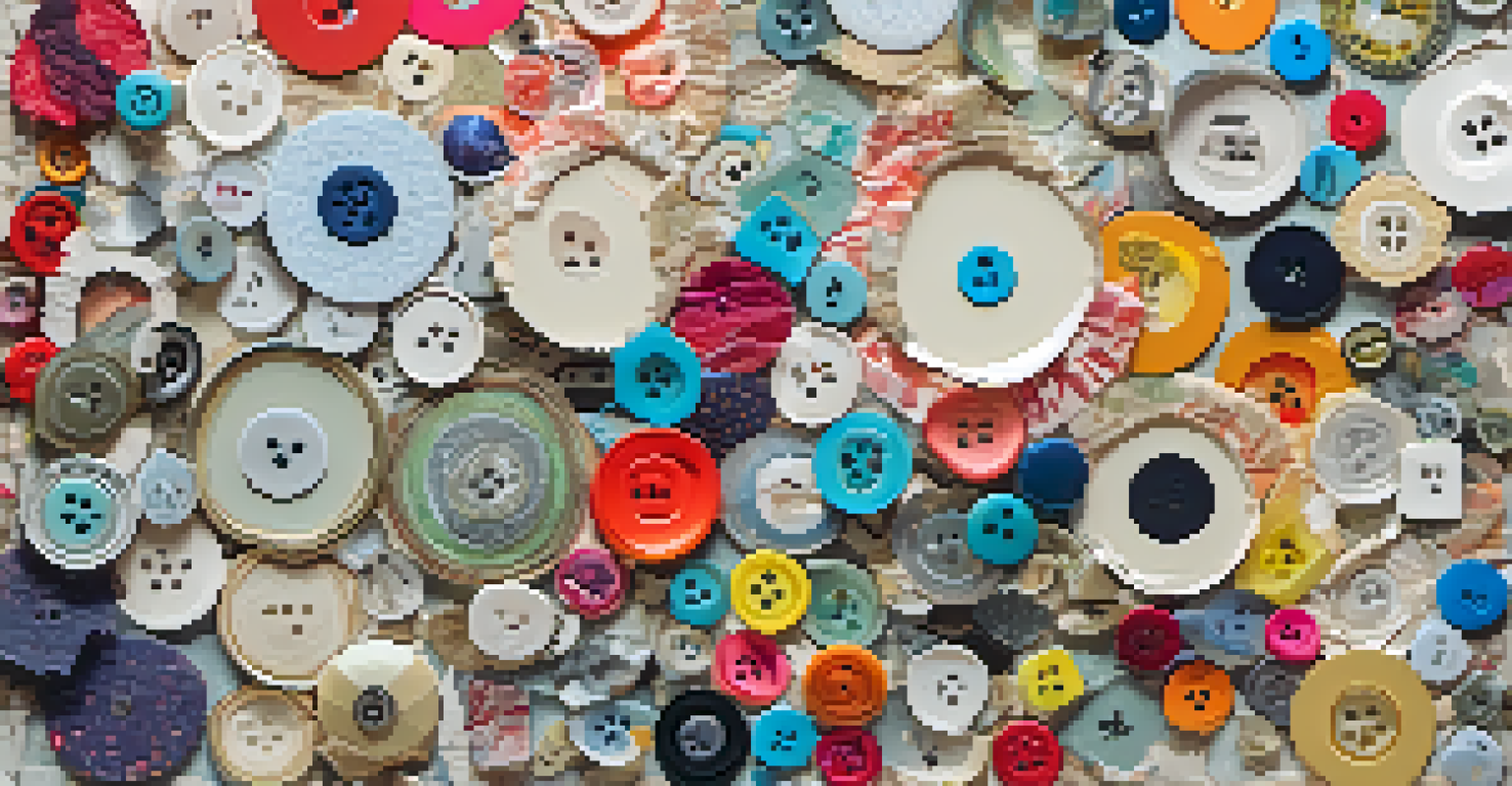Exploring Different Materials for Collage Painting Creations

Understanding the Basics of Collage Painting Materials
Collage painting is a vibrant form of art that combines different materials to create something unique. At its core, it involves layering various elements like paper, fabric, and even found objects to form a cohesive piece. This diversity is what makes collage so exciting; each material contributes its own texture and color, enriching the overall composition.
Art is not what you see, but what you make others see.
When starting your collage journey, it's essential to understand the materials you can use. Common options include magazines, newspapers, and colored paper, all of which can add visual interest. You might also consider non-traditional materials like leaves, photographs, or fabric scraps to further enhance your artwork's depth and character.
As you explore these materials, think about how they can tell a story or evoke emotions. The beauty of collage painting lies in the ability to mix and match these elements, allowing every artist to express their individual style and creativity.
Paper: The Foundation of Your Collage Creations
Paper is often the primary material in collage painting, and with good reason. It comes in countless varieties, from textured cardstock to delicate tissue paper, each offering different ways to interact with paint and other elements. For instance, using thicker paper can provide structure, while lighter papers can create a sense of airiness in your artwork.

Don’t shy away from mixing different types of paper within a single piece. Layering glossy magazine cutouts over matte papers can create dynamic contrasts that catch the eye. You can also play with color; using warm tones alongside cool hues can evoke different emotions and set the mood for your artwork.
Explore Diverse Collage Materials
Collage painting thrives on a variety of materials like paper, fabric, and found objects, each adding unique textures and colors.
As you experiment, remember that the texture of the paper can dramatically affect the final look of your collage. Consider crumpling, tearing, or folding your papers before gluing them down to add more visual interest and a tactile quality that invites viewers to engage with your work.
Fabric: Adding Depth and Texture to Your Collage
Incorporating fabric into your collage can introduce a whole new level of depth and texture. Textiles like cotton, silk, or burlap can add warmth and richness to your artwork. Plus, the variety of patterns and colors available in fabric can help you create a more dynamic and visually appealing piece.
Creativity takes courage.
When working with fabric, consider how different materials interact with paint. Some fabrics may absorb paint differently than paper, leading to exciting results that can surprise you. For example, using a sheer fabric can create a layered effect that softens the colors beneath it, while a bold print can serve as a striking focal point.
Don't hesitate to experiment with sewing or gluing fabric pieces together to create unique shapes and dimensions. This technique can transform a flat collage into a three-dimensional work of art, inviting viewers to explore every angle and layer of your creation.
Found Objects: Unique Additions to Your Collage Art
One of the most thrilling aspects of collage painting is the opportunity to incorporate found objects. These could be anything from buttons and beads to pieces of string or even small trinkets. Using items that have personal significance can add a layer of storytelling to your artwork, making it truly one-of-a-kind.
When selecting found objects, think about their shape, color, and texture and how they will interact with the other materials in your collage. For instance, a shiny button can create a fun contrast against a matte background, drawing attention and adding visual intrigue. Additionally, incorporating 3D elements can give your piece a playful, tactile quality.
Use Paints to Enhance Your Art
Incorporating paints and inks can elevate your collage by adding depth and unifying different elements in your artwork.
As you gather materials, don't limit yourself to conventional objects. Everyday items can often offer the most unexpected surprises, so let your creativity lead the way. Keep an eye out for interesting textures and shapes in your surroundings, and you'll be amazed at how they can enhance your collage.
Paints and Inks: Bringing Your Collage to Life
While the materials you choose play a significant role in your collage, the application of paint and ink can elevate your creation to another level. Whether you opt for acrylics, watercolors, or even spray paint, these mediums can add color and depth that ties your collage together. Experimenting with different techniques, like splattering or brushing, can yield exciting results.
Consider using paint to create backgrounds or to highlight specific areas of your collage. For example, a washed-out background can make the vibrant colors of your collage elements pop, while bold strokes can guide the viewer's eye through the piece. This interplay of colors can help to unify diverse materials into a cohesive artwork.
Incorporating ink offers another layer of detail, allowing you to add fine lines or patterns that complement your collage. Whether you choose to doodle, write, or create intricate designs, these small touches can bring your collage painting to life and infuse it with your personal style.
Adhesives: Choosing the Right Bond for Your Collage
Selecting the right adhesive is crucial to ensuring your collage holds together beautifully. There are various options available, from glue sticks and liquid glue to Mod Podge and double-sided tape. Each type has its advantages, so understanding their properties can help you choose the best one for your project.
For instance, glue sticks are great for lightweight materials and provide a quick-drying solution, while Mod Podge can serve as both an adhesive and a sealant for added durability. If you're working with heavier objects, a strong liquid glue may be necessary to ensure everything stays in place. Always test your adhesive on a small area first to avoid any surprises!
Choose the Right Adhesives
Selecting suitable adhesives is essential for ensuring the durability and polished look of your collage masterpiece.
Remember, the goal is to create a lasting piece of art. Choosing the right adhesive not only enhances the longevity of your collage but also keeps it looking polished and professional. So take your time when selecting your glue, as it can make all the difference in your final piece.
Final Touches: Completing Your Collage Masterpiece
Once you've assembled your collage and applied your paints, it's time for the final touches that truly bring your artwork to life. This stage allows you to step back and assess your piece, identifying areas that may need refining or additional elements. Sometimes, a simple addition can transform a good collage into a great one.
Consider adding layers of varnish or sealant to protect your artwork and give it a polished finish. Glossy or matte finishes can alter the appearance of colors and textures, so choose one that aligns with your vision for the piece. This step can also enhance the longevity of your collage, safeguarding it from dust and fading over time.

Finally, don’t forget to sign your work! Adding your signature not only personalizes your creation but also marks it as a finished masterpiece. Embrace the journey of creating collages, and remember that every piece is a reflection of your artistic expression.